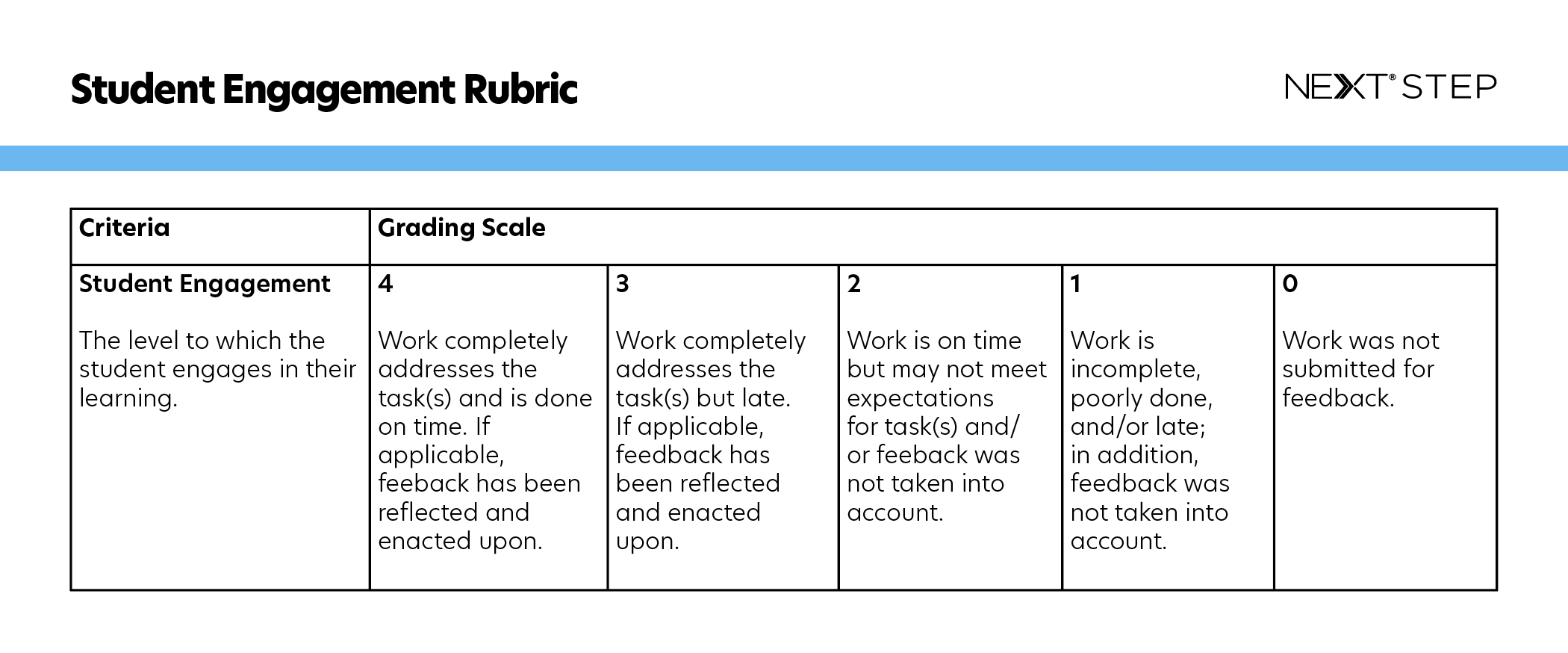Several years ago, I began using a 4-point Student Engagement rubric for assignments that were either early in the knowledge acquisition period or for process-type assignments. My Student Engagement Rubric is below:

Before implementing this rubric, my team's teachers feared that the students would see an assignment and say “It’s only 4 points; I’m not going to do it.” I admitted that this might happen, but those are also the students who would attempt to refuse to complete a 10-point assignment or a 100-point one.
Here are five reasons why you should utilize a Student Engagement rubric:
- Removes focus on the grade: my students are notorious for glancing at their grade and then putting the paper in their folder, completely ignoring any comments or feedback I left. With the student engagement rubric, they know what they will score when they turn it in. Was it complete and on time? It’s a 4. Was it complete but late? It’s a 3.
- Increases attention to feedback: Because they already know what score they will get when they submit, when I hand back work, they focus on my comments and feedback. Conversations I have with the students after they get their work back have changed from “Why did I get this grade?” to “If I made this change, would that make my point stronger?” Instead of sighing and asking if they had looked at the rubric, I am now having meaningful conversations about the content which, of course, makes my teacher heart happy.
- Emphasizes the importance of continual learning and growth: I emphasize continual growth and improvement with my students, especially in writing. A 4 doesn’t mean it is perfect; it means you have considered my feedback, made appropriate changes, and are showing growth.
- Communicates a student's work ethic in class: This rubric is a very easy way for parents and students to quickly understand what effort is being put into the learning process in class. I have the rubric on my syllabi and I go over it at Open House at the beginning of the year. When a student comes to me unhappy about a final grade on an essay, a quick glance through the grade book can show the real picture. A lot of 1s and 2s means they are not keeping up with their work for class or doing work incompletely. Emails from parents no longer begin with “Can you help me understand why my child did so poorly on their essay?”. Now, they say “I see my child is failing to turn work in on time and that affected their final essay grade. What can I do to help them be more successful next time?”.
- Relieves mental taxation of grading: Super detailed rubrics are great for communicating expectations. I use them for all of my essays and projects. I go over them with the students when I assign the essay and refer back to them often in class. The students have access to them as they work. However, the student engagement rubric takes the mental load from scoring using a super detailed rubric for 120 students for each part of the writing process to give meaningful feedback.
Since I implemented the Student Engagement rubric, I have seen a tremendous improvement in my students’ writing, their ownership of their work, and their pride in their involvement. I highly suggest you try it in your classroom this upcoming year.



